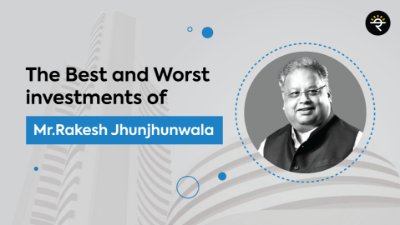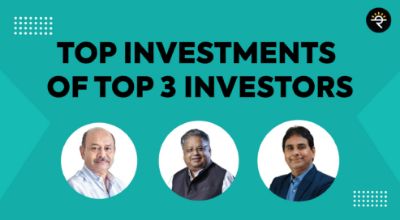Rakesh Jhunjhunwala the veteran Indian investor also known as the Big Bull of India recently lost his life on the 14th of August 2022.
Rakesh Jhunjhunwala was the crown jewel of the Indian Stock market who believed in the Indian growth story and was so optimistic about the Indian Capital markets and was always bullish on the Indian stock markets.
As we all know Rakesh Jhunjhunwala started his investing career way back in 1985 with a mere amount of Rs.5,000 with his own investment philosophy which backed every investment he made in the markets but what separated him from the crowd was the size of his bets whenever his conviction was high which led him to invest a large chunk of money in his best stocks which are Titan, Lupin and Crisil back in 2002-03. In an interview, Ramesh Damani pointed out that Jhunjhunwala’s investments logged a whooping CAGR of 54% over the last 35 years.
In an interview, Rakesh Jhunjhunwala said “If a girl is pretty then the suitor will come” which means if the company is good the investors are going to come and invest. He further mentioned that he likes to invest in stocks that are not popular because you get a good company at a cheaper price.
Let us understand what are the top 5 lessons which we can learn from his investing career
1. Be ready to grab an opportunity - He firmly believed that the volatile nature of markets is what creates opportunities
2. Invest in a business that is Hard to replace – Investing in such businesses will give you a competitive advantage.
3. Success requires obsession – He used to say that people become shy of investing in stocks after booking losses. His advice for investors was to prepare themselves for the market and continue investing with a thumb rule of 'buy, hold and forget.' He used to advise investors to hold a stock as long as they can.
4. Never time the market - Stock markets are always right and no one can time the market. He was of the opinion that one should enter or exit on the basis of market timing instead of timing the market on its own.
5. Be Bold - He believed that “whatever you can do or dream you can, begin it. Boldness has genius, power, and magic in it." So, one should take stock market shopping like any other shopping. As you try to buy goods at the cheapest possible rates, you should do the same while buying stocks as well.
When he was asked in an interview about his worst investment, Mr. Jhunjhunwala said that his worst investment was in his own health. Shankar Sharma one of his close friends said that “with Rakesh, you need to have a strong liver to match up to his capabilities both in terms of thinking and drinking as well” So irrespective of the net worth that Mr.Jhunjhunwala had health is something where he got a pullback in life because of his habits.
Finally, India will remember him as the biggest bull, and his investment rules or philosophies cannot be written down in a book as the man himself along with his ideas were unique.













